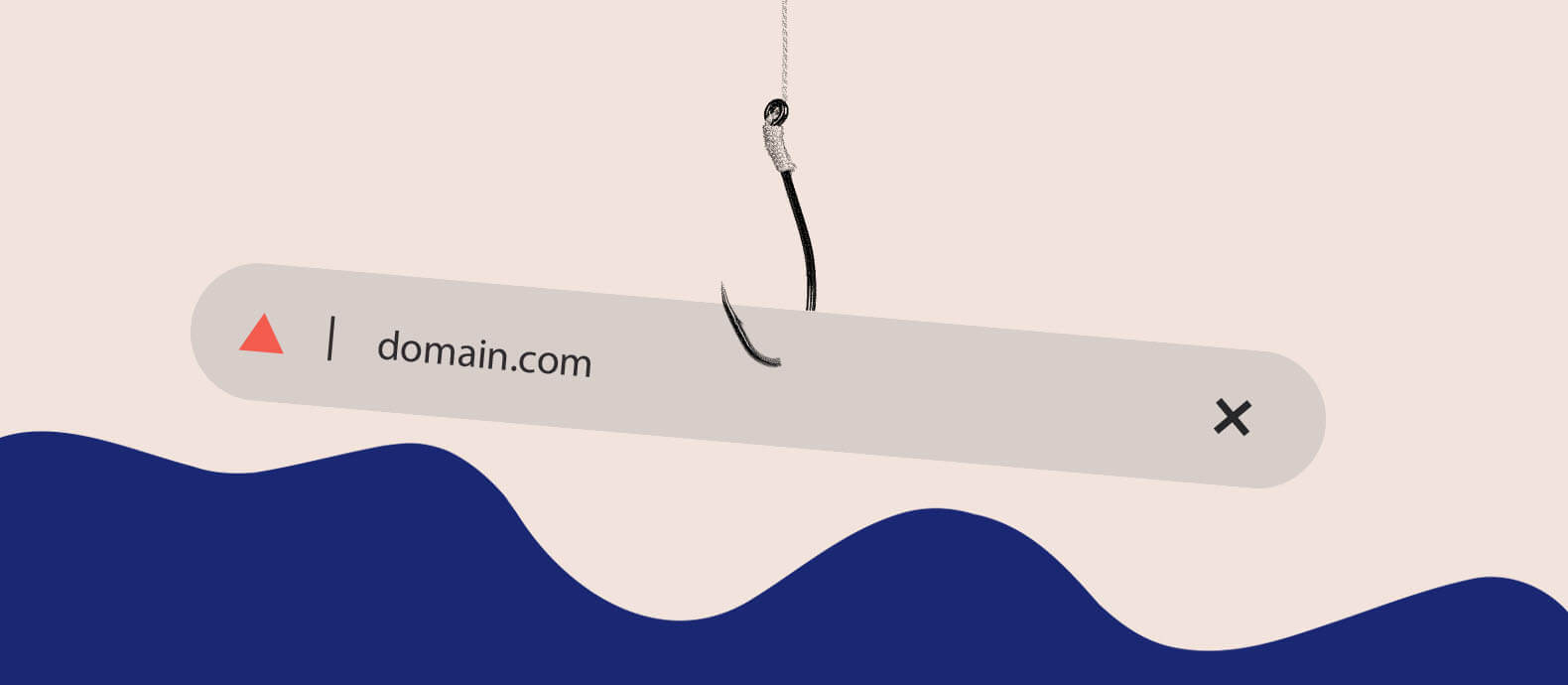The online world is full of fraud websites seeking to mislead customers and steal from businesses through impersonation and misuse of intellectual property (IP). These fraudulent websites present massive issues for a business’s brand and revenue. The best way to combat these issues is to report a website for fraud and pursue robust takedown measures.
However, many businesses rely on inefficient methods or simply don’t know how to report and take down fraud websites. Thankfully, there are several ways to report fraudulent websites to ensure that you can protect your brand, your customers, and your revenue.
In this blog, we’ll be exploring how to report fraud websites and takedown digital fraudsters by highlighting several topics, including:
- What is a fraud website?
- How to spot a fraud website
- How to report a fraud website
- How to stop fraudulent websites at scale
- How to prevent your customers from falling victim to fraudulent websites
What is a fraud website?
A fraud website is an illegitimate website that is created and used, to deceive users and subject them to malicious attacks and misleading impersonation. Various kinds of fraud websites use different tactics to lure users into giving them information or money. For many businesses, a fraud website that impersonates their brand can be extremely damaging. Such sites can ruin a brand’s image, steal away customers, and attack the value of their intellectual property.
How to spot a fraud website
So, how do you tell a fraudulent website from a real one? Usually, there are a few key indicators. However, you have to be careful because scammers are getting increasingly clever at circumventing the normal rules and creating convincing websites.
Firstly, you should check the domain name. A domain name is a unique and often easy-to-remember address that can be used to access websites. Fraud websites will often use a domain name that is similar to, or references, a well-known brand name, product name, or website name.
Then you should browse the website. Most fraud websites use a shallow level of deception. After browsing the website you can usually tell that it’s fake if it is filled with bad spelling, grammar mistakes, and phrases that sound strange. You should also look out for low-quality images, graphics, and logos that look like they were put together in a hurry. These are all indicators of a fraudulent website constructed quickly by a scammer looking to make some quick money.
Are there reviews of this fraud website? If there are no customer reviews this is often an indication that something is not quite right. Equally, if there is a large quantity of oddly similar or overly positive reviews these may have been falsely created by scammers to mislead potential website visitors.
One way to know that you are dealing with a verified website is to check the security label in the web browser bar. The padlock icon means that the website is encrypted, meaning any browsing or payments conducted on the website cannot be intercepted. While some scammers are capable of forging or buying these padlocks they are usually a strong indicator that the website is legitimate.
How to report a fraud website
There are many ways to report a fraudulent website. The method you choose will depend on the seriousness of the fraudulent action, the jurisdiction, and the resources you have to pursue any scammers.
- Reporting to the website host
The first method you can attempt is to report the fraudulent website to the website host or domain registrar. To identify the domain host you can simply head over to lookup.icann.org and enter the domain name or Internet number resource. Then you can contact the website host and provide them with a complaint or a report on the situation.
Usually, to get the website taken down you need to provide the website host with sufficient evidence that the website is fraudulent. In such cases, evidence can include screenshots, the URLs of the offending content, specific descriptions of the malicious or fraudulent activity, and much more.
- Reporting to search engines
You can also report scam websites to search engines like Google, Bing, Yahoo, or Baidu. Most search engines will have policy guidelines that intend to restrict the emergence of fraud websites. For example, if Google detects a fraud website that violates its policies the algorithm will demote that page in search rankings, ensuring that it is hard to find. To report a fraud website on Google you can simply head over to this Google Search Central page, ‘Report spam, paid links, or malware’
- Reporting to law enforcement
If reporting to search engines and the website host proves unsuccessful, you may also report fraud websites to the relevant law enforcement. If you are based in the US, you can report fraud to the Federal Trade Commission (FTC). As with the other reporting processes you will need to provide some relevant evidence. Your report will then be shared with law enforcers from the FTC who will decide whether there is sufficient evidence to pursue the potential infringers.
- Cease and desist letter
You can also take a more direct approach by sending the creator of the fraud website a cease and desist letter. This is a common tactic to take before litigation. A cease and desist letter is a formal pre-action document that demands the recipient stop their potentially illegal activity. As well as sending the letter directly to the potential scammer via email or post, you can also send the cease and desist document to the site administrator or the domain registrar.
How to stop fraudulent websites at scale
Unfortunately, fraudulent websites appear all the time. They can be a constant nuisance for legitimate businesses. If your business is dealing with fraud websites on a recurring basis then you may want to start using a smart software solution to make the process of reporting fraudulent websites more efficient and cost-effective
Red Points’ Domain Takedown Service is the ideal solution. Our domain takedown service is designed to automatically find, report, and remove fraudulent websites that are taking advantage of your business.
Our system functions via two simple steps:
1. Detect
Our automated bots detect potentially fraudulent websites that appear across social media, search engines, and domain databases. Scammers will have no hiding place, as our bots scour the web uncovering fraud websites that have the potential to damage your brand.
2. Remove
Based on your validation we then act to report fraud websites right away, with the ultimate goal of taking them down. Our enforcement success rate on fraudulent website removal is 80%, with an average domain takedown time of 1-7 days. This means that with our Domain Takedown Service, you are highly likely to be able to take down any fraudulent websites within a few days.
3. Identify
Following enforcement, our service also works to stop repeat infringers by uncovering scammer identities, leveraging data, and putting you in a position to take successful legal action.
How to prevent your customers from falling victim to fraudulent websites
There are a few key actions your business can take today to prevent your customers from falling victim to fraudulent websites.
- Registering trademarks and domain names
Registering your trademarks and domain names will make them less vulnerable to attacks by scammers. A trademark will provide you with legal protection over your intellectual property – making it illegal for any fraudulent website to copy your content.
Additionally, if you register your domain names it will be easier to report fraud websites to domain registrars and search engines. Both of these measures will ensure the legitimacy of your website, meaning your customers will be less likely to fall into the net of any scam websites.
- Monitoring online presence
Continue to monitor the online presence of fraudulent websites. You can do this manually or you can engage an automated Domain Monitoring solution like that provided by Red Points. Constant monitoring is important because it ensures you can detect when new fraud domains emerge. This will give you the best opportunity to report fraud websites and tackle scammers at scale.
- Educating customers
Inform your customers about the perils of fraudulent websites. Educate them on the tell-tale signs of fraud websites. Let them know about the consequences they might face if they interact with fraudulent websites. For example, they could have their money and sensitive information stolen. They must be aware of this because it gives them the best chance of steering clear of the common scams and traps.
What’s next
Fraud websites present a huge challenge for a wide variety of businesses. If you want to protect your brand, your customers, and your revenue you need to be proactive and pursue fraudsters. The best way to combat this issue is to report and take down any fraudulent websites you come across.
Red Points’ Domain Takedown Service will help you stop fraudulent websites at scale. Through smart detection and robust enforcement processes, Red Points will keep your brand safe from fraudsters and bad actors, ensuring that you can grow and succeed for years to come.
To learn more about how Red Points can help you, click here to see Red Points’ Domain Takedown solution in action.








